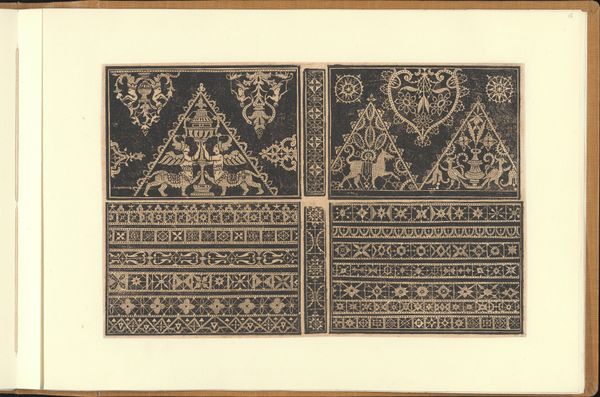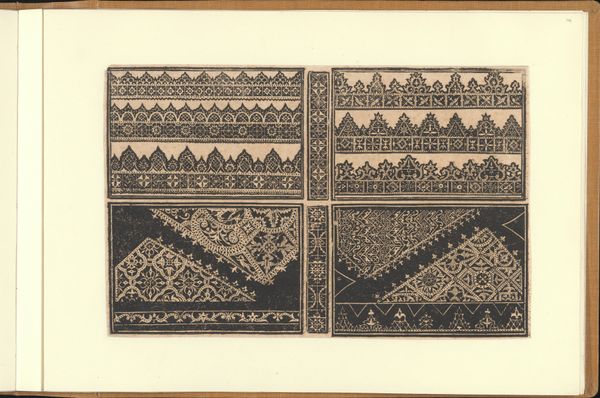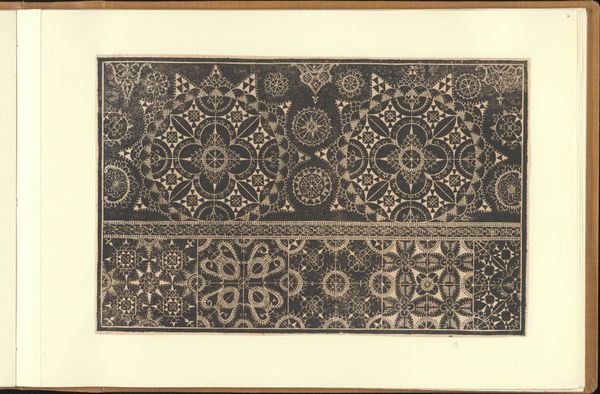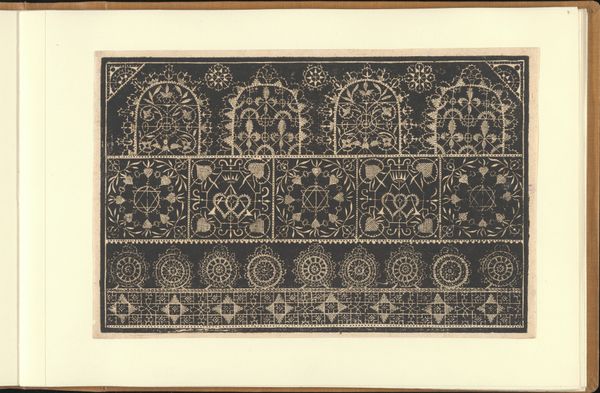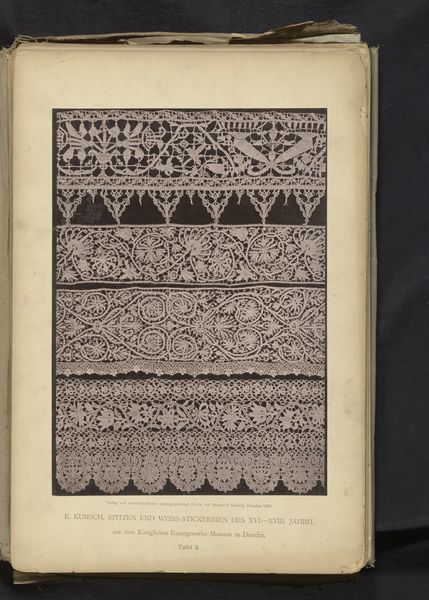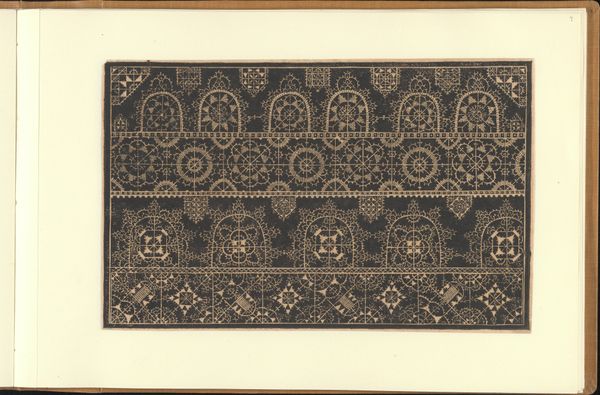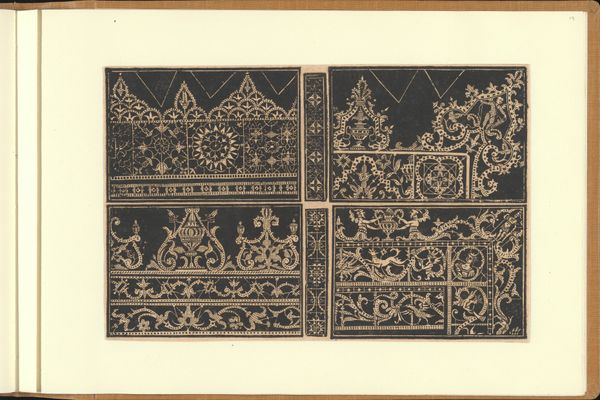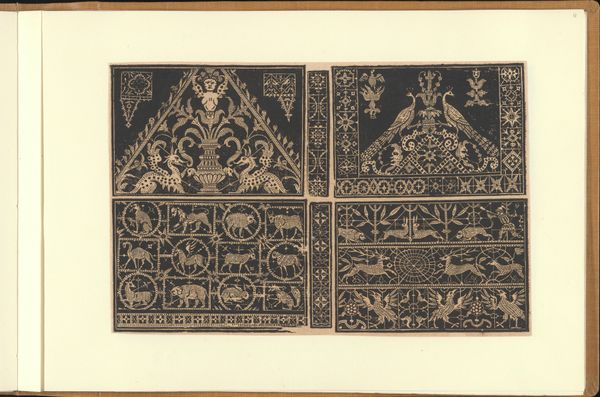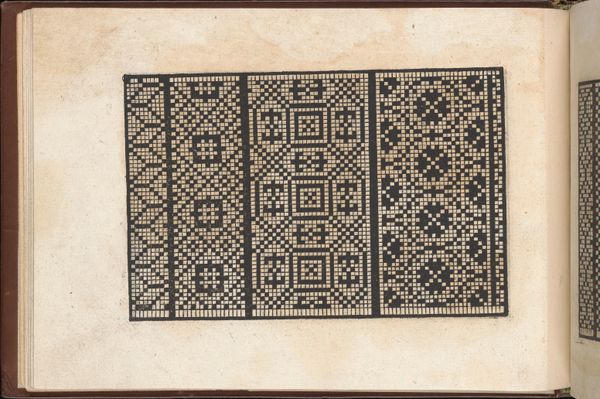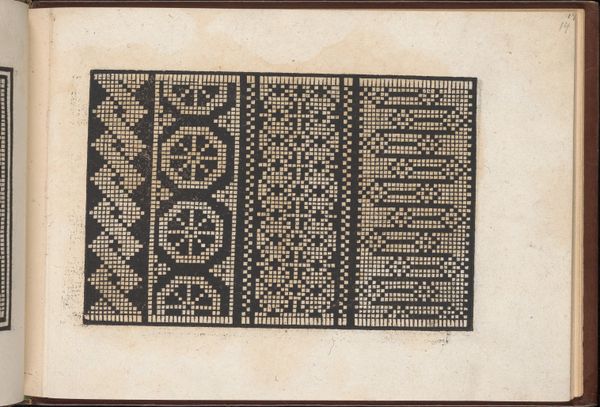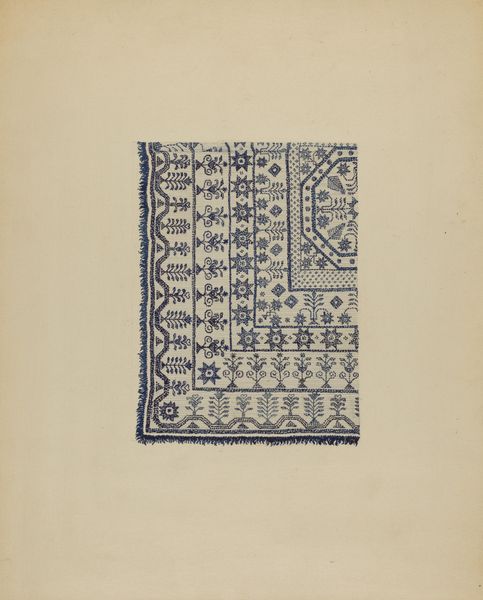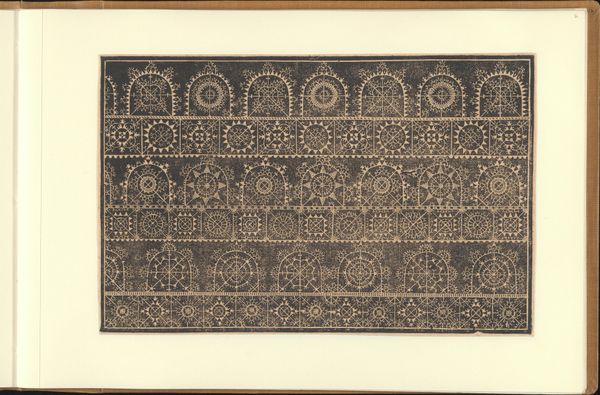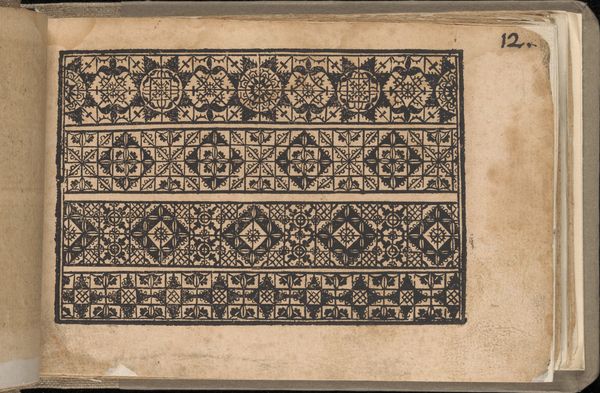
drawing, graphic-art, ornament, print, paper, woodcut
#
drawing
#
graphic-art
#
ornament
#
toned paper
#
ink paper printed
# print
#
woodcut effect
#
paper
#
woodcut
#
northern-renaissance
Dimensions: plate: 6 7/8 x 10 1/2 in. (17.5 x 26.7 cm)
Copyright: Public Domain
Curator: Before us, we have a page from "Schon newes Modelbuch…Page 12(r)," dating back to 1617. It is an example of Sigismundus Latomus's printed ornament designs, utilizing the woodcut technique. Editor: My immediate impression is one of incredibly intricate, almost hypnotic repetition. The stark contrast between the black ink and the toned paper creates a striking visual rhythm, especially given the minute scale. Curator: Indeed, these model books served a crucial function in disseminating patterns for lace and embroidery during the Northern Renaissance. Examining Latomus’s book, we can explore how marginalized communities, such as women, found economic empowerment through needlework, gaining some degree of autonomy in a restrictive societal structure. These designs became potent symbols of creativity and labor. Editor: From a purely formal perspective, notice how each panel presents variations on geometric themes. There’s an interesting interplay between the linear borders and the more organic, flowing motifs within. That tension elevates the ornamental into something more visually compelling. Curator: Considering its cultural significance, the reproduction of these designs democratized access to artistry. By extension, did this challenge rigid hierarchical structures and foster inclusivity for individuals whose access to art production and consumption was otherwise extremely limited? Editor: Perhaps, though the book itself likely catered to a wealthier clientele initially. Nevertheless, analyzing its construction through a structuralist lens, it’s impossible to ignore the careful arrangement, almost like a language of ornamentation that seeks a formal resolution through infinite combination and recombination. The symmetry and contrast speak to deeper archetypal orders, perhaps. Curator: Thank you, that offers a new perspective to understanding that these were empowering tools—tools to generate financial capital for the working class, notably women in that historical moment. These "minor" arts tell compelling stories about the socio-economic landscape of the era, giving visibility to voices often silenced. Editor: Looking closely at the printed surface, one cannot but appreciate the technical virtuosity needed to translate such complexity through woodcut. Latomus clearly knew how to harness the expressive potential inherent in that medium. I think his work encapsulates an interesting crossroads between artistic invention and craft. Curator: Yes, exactly. Considering "Schon newes Modelbuch…Page 12(r)" offers a chance to reassess labor value and design from past eras to reconsider present social, financial and creative production inequities. Editor: Indeed, the image serves as a compelling example of how aesthetic and social dimensions of art constantly converge and interact to offer insight and value.
Comments
No comments
Be the first to comment and join the conversation on the ultimate creative platform.
